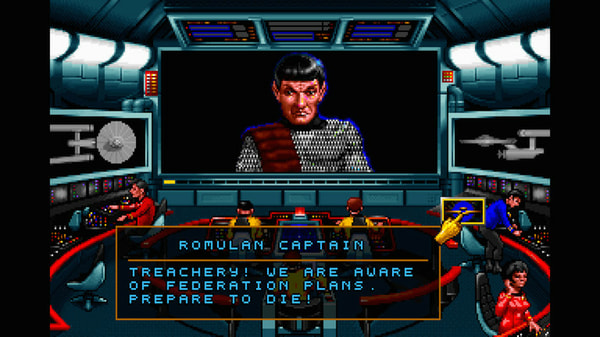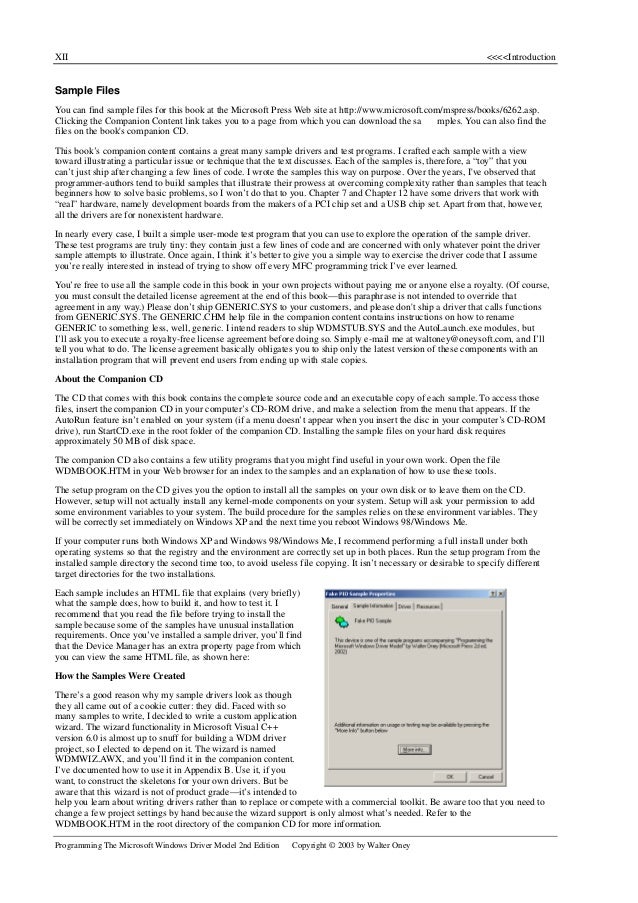- Walter Oney Software Driver Download For Windows 10
- Walter Oney Software Driver Download For Windows 10 64-bit
Author: Walter Oney
Format: CHM
Category: Technical
- The Microsoft Windows driver model (WDM) supports Plug and Play, provides power management capabilities, and expands on the driver/minidriver approach. Written by long-time device-driver expert Walter Oney in cooperation with the Windows kernel team, this book provides extensive practical examples, illustrations, advice, and line-by-line analysis of code samples to clarify real-world driver.
- The process known as WDM NULL filter driver or sys belongs to software Windows (version 2000 DDK driver) or sys by Walter Oney Software (www.oneysoft.com) or Windows (windows.microsoft.com) (version 2000 DDK provider) or Apple Computer inc. Description: Filter.sys is not essential for the Windows OS and causes relatively few problems.
Driver development part 6 introduction to display drivers. Download programming the microsoft windows driver model 2nd edition developer reference pdf. What kind of driver do i need programming the microsoft. Programming the microsoft windows driver model by walter oney. Programming the microsoft windows driver model 2nd ed ebook. The VCPTest program is intended to show how to communicate with an FTDI device from a Windows CE based system using FTDI’s VCP drivers for Windows CE. It sends and receives data through a loopback connector. To download the program with C source code, click click here.

Tag: Windows
Posted on 2007-06-22, updated at 2010-12-06. By anonymous.
- Author:Walter Oney
Written for advanced C/C++ programmers, Walter Oney's Programming the Microsoft Windows Driver Model is a technically astute and clearly presented guide to writing custom Windows 2000 device drivers.

 The author's command of the details of the new Windows Driver Model (WDM) standard is what makes this book such a clear success. (Because the WDM is rich in kernel and system services, the trick is often knowing how to use what's available rather than doing everything yourself.) The author presents a solid overview of the WDM architecture and breaks down the process of writing custom device drivers into manageable pieces, from the basics of loading device drivers to creating and processing I/O request packets. The book is very good at exposing kernel system calls, design principles, and programming techniques (such as managing synchronization and handling errors). There are also 'nerd alerts' that point out extremely technical material.
The author's command of the details of the new Windows Driver Model (WDM) standard is what makes this book such a clear success. (Because the WDM is rich in kernel and system services, the trick is often knowing how to use what's available rather than doing everything yourself.) The author presents a solid overview of the WDM architecture and breaks down the process of writing custom device drivers into manageable pieces, from the basics of loading device drivers to creating and processing I/O request packets. The book is very good at exposing kernel system calls, design principles, and programming techniques (such as managing synchronization and handling errors). There are also 'nerd alerts' that point out extremely technical material.This book shows you what you'll need to create WDM drivers that cooperate fully with Windows 2000 (and Windows 98). Features like Plug and Play (PnP), Windows power management, and the new Windows Management Instrumentation (WDM) standard get full attention here. There is plenty of sample code (plus a custom Visual C++ AppWizard that generates skeleton code for a default WDM driver) to get you started. Examples for working with the S5933 PCI chip set (and other simple hardware) let you see WDM drivers in action.
The process of writing device drivers certainly has changed from the early days of DOS. But armed with this handy and thorough book, C/C++ programmers can successfully create drivers for custom hardware that take full advantage of all the features of the powerful new WDM standard.

Download links for 'Programming the Microsoft Windows Driver Model':

http://rapidshare.com/files/15637758/F1BBBE30-347C-4f60-AB49-21D87662160F.rar
- 2017-12-25[PDF] Programming the Microsoft Windows Driver Model (2nd Edition) (Developer Reference)
- 2009-08-30Programming the Microsoft Windows Driver Model, Second Edition (Repost) - Removed
- 2007-07-07Programming the Microsoft Windows Driver Model, Second Edition - Removed
- 2007-07-06Programming the Microsoft Windows Driver Model, Second Edition - Removed
- 2013-12-02Microsoft Windows XP Professional, 3rd Edition - eazydoc.com
- 2013-12-23Programming Windows Azure: Programming the Microsoft Cloud
- 2013-12-23Developing Applications for the Cloud on the Microsoft Windows Azure Platform
- 2013-07-16Programming Windows Azure: Programming the Microsoft Cloud
- 2013-07-16Developing Applications for the Cloud on the Microsoft Windows Azure Platform - Removed
- 2013-03-17Programming Windows Azure - Programming the Microsoft Cloud
- 2013-02-12Programming Windows Azure: Programming the Microsoft Cloud (Repost)
- 2012-08-07Programming Windows Azure: Programming the Microsoft Cloud
- 2012-08-07Developing Applications for the Cloud on the Microsoft Windows Azure Platform (Patterns & Practices) - Removed
- 2012-06-10Programming Windows Azure: Programming the Microsoft Cloud (repost)
- 2012-02-05Network Programming for Microsoft Windows [ReUpload] - Removed
- 2012-01-08Developing Applications for the Cloud on the Microsoft Windows Azure Platform (Patterns & Practices) free ebook download
- 2011-08-26Programming Windows Azure: Programming the Microsoft Cloud
- 2011-06-23Programming Windows Azure: Programming the Microsoft Cloud By Sriram Krishnan
- 2011-06-23Programming Windows Azure: Programming the Microsoft Cloud
- Download links and password may be in the description section, read description carefully!
- Do a search to find mirrors if no download links or dead links.
Vendors can provide an INF file to install a WBDI driver.
The following is a list of guidelines for biometric device installation. The code examples in this topic are taken from the WudfBioUsbSample.inx file of the WudfBioUsbSample:
Walter Oney Software Driver Download For Windows 10
WBDI drivers should specify a class of 'Biometric.' Set ClassGuid equal to the value that corresponds to GUID_DEVCLASS_BIOMETRIC in Devguid.h:
In your .HW section, provide AddReg directives to specify three sections that contain entries to be added to the registry:
Provide the named sections referred to in the .HW section. The [Biometric_Device_AddReg] section sets values for the biometric device, including the exclusive flag and system wake/device idle. To be recognized by Windows Biometric Framework, UMDF-based WBDI drivers must set the 'Exclusive' value to 1. The first two lines of the [Biometric_Device_AddReg] section specify access control list (ACL) rights so that the device can only be opened by an administrator or the local system account. When you specify these ACL rights, third-party applications cannot open the device and capture fingerprint data when the WinBio service is not running. For example:
A WBDI driver that exposes functionality to a legacy (non-WBDI) biometric stack should set the Exclusive value to zero. If this value is set to zero, the Windows Biometric Framework does not attempt to control the device and the device is not exposed through WBF.
Vendors can have a single driver binary that can work with legacy stacks and WBF, but the two cannot operate simultaneously. WBF will only operate if the device can be opened with exclusive access.
The second named section contains registry values for the plug-in adapters. The sample uses the Microsoft-provided sensor adapter and storage adapter. This section also enables Windows log-in support by setting the SystemSensor value:
Finally, the third section sets the following registry values for the database service. The identifying GUID must be unique for each vendor database of a certain format. For instance, in this code example from the sample, change 6E9D4C5A-55B4-4c52-90B7-DDDC75CA4D50 to your own unique GUID in your INF file.
To differentiate WBDI and legacy drivers, vendors must set a Feature Score for the driver in the INX file. Feature Score is not set in the WudfBioUsbSample sample. For more information about setting a Feature Score, see Ranking a Biometric Driver on Windows Update.
For information about INX files and how they differ from INF files, see Using INX Files to Create INF Files.
In order to replace a WBDI driver with a legacy driver, use the following procedure:
Walter Oney Software Driver Download For Windows 10 64-bit
Close all currently active WBF applications.
Uninstall the WBDI driver.
Stop the WBF service, restart it, and then stop it again.
Install the legacy driver.
